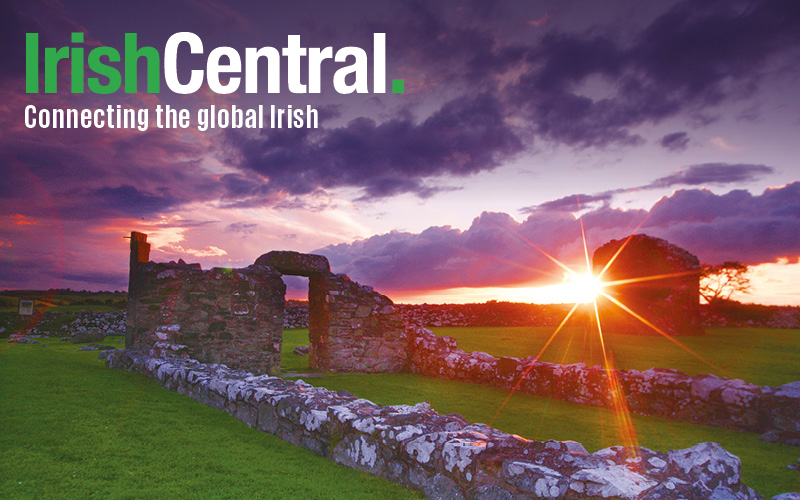Across Ireland's landscape thousands of years of history are recorded by ring-forts, round towers, castles, Georgian streets and thatched cottages. All are built to endure in stone. It's perhaps more surprising that an equal span of history is still marked today in the far more fragile form of Ireland's traditional boats.
Ireland's position off the most western shore of a huge continent has long attracted settlers, invaders colonists and traders. Each wave of incomers, by necessity, arrived in boats. And each type of boat was then absorbed into Ireland's maritime history, retaining some of its original features whilst being adapted to local conditions around Ireland's coastline.
Most people think of traditional 'Irish' boats as being either the skin-covered currach or the Galway hooker, but according to the definitive book on Irish craft – Traditional Boats of Ireland: History, Folklore and Construction – there are more than 60 distinct types of craft to be found on Irish waters. Some drew inspiration from Viking raiding ships, others from medieval trading craft or from early continental fishing boats. All contributed to Ireland's floating history book of yawls, skiffs, punts, luggers, nickeys, nobbys, skiffs, cots, gigs, prongs, hobblers, and even Welsh-style coracles.
It is likely that currachs – curach in Irish, though naomhóg in Cork and Kerry, and a 'canoe' on the Clare coast – were the first type of boat to reach Ireland if only because they are one of the earliest forms of seaworthy boat. A skin-boat is almost a sea creature, with its hide covering a flexible rib cage, allowing it to slide over big swells and short, sharp waves yet still carry a tonne of peat or a trussed cow as payload. The seaworthiness of leather boats was recounted in St Brendan's voyage from Kerry via Scotland, the Faroe Islands, Iceland and Greenland to American, and then proven when explorer Tim Severin followed St Brendan's instructions for building and sailing a large currach and successfully reached Newfoundland in the 1970s.
The Vikings, as raiders, traders and colonists, introduced another enduring boat-building technique, the clinker-built hull with planks overlapping each other to make a strong, light boat that, even when un-decked, was seaworthy enough to be sailed at speed through exposed and stormy seas. Almost unchanged in design since the arrival of the Norsemen more than a thousand years ago, the drontheims of Ireland's north-east coast retain the Viking double-ended design with a sharp stern matching the wave-parting blade of the bow.
The boat usually associated with Galway, the hooker, has a disputed ancestry though in earlier times there were local variants, such as the Kinsale hooker, around the coast, and all were used for transport when using seaways was often more practical than moving goods and people overland. The word 'hooker' has been linked to the Dutch word, hoeker, which in turn relates to the medieval 'howker'.
However in Irish the craft are distinguished by more exactly graduated names based on size. Thus the bád mór is the largest boat at around 40 feet in length. The leathbhád, or 'half-boat', measures around 30 feet in length, whilst the gleoiteog and the similar púcan are both around 25 feet, with the latter having a lug rig unlike the gaff-rigs of the other three types.
But length in a traditional boat was never an exact off-the-peg matter. Individual boat-builders used their own measurements and experience and their 'eye' to meet the demands of the buyers who might add or subtract a few feet to or from the standard length depending on how much money they had for materials. This was the case with the Irish boat-building boom of the 19th century, when fishing provided jobs at sea and back on shore. At first fishing fleets were mainly composed of foreign boats sailing from Irish ports to harvest the abundant shoals of herrings and mackerel but soon Irish crews were buying old fishing boats from Cornwall and the Isle of Man, and these in turn became the templates for Irish-made fishing craft.
Irish ship-wrights didn't just produce fishing boats, though. Tyrell's in Arklow built Asgard II, Ireland's sail-training ship until it was lost in the Bay of Biscay in 2008, and Francis Chichester's Gypsy Moth III, in which he won the first single-handed race across the Atlantic in 1960. In West Cork, Baltimore's Fisheries School built both Conor O'Brien's Saoirse in which he circumnavigated the world between 1922 and 1925, and the Ilen taken in 1926 to the Falkland Islands where it was worked almost to wreckage before finally being returned home in 1998, for restoration at Hegarty's boatyard in Baltimore.
Baltimore's more local fishing boats were as varied in design, with some claiming that 17th century pirates' gigs and jolly boats influenced such craft as the Heir Island lobster boat, mackerel yawl and 'towel-sail' yawl. The latter were named for the tent erected for the crew to live under during weeks of coastal fishing, the same scrap of canvas – teabhal – being pressed into service as an extra sail in a following wind.
Like many sea-looking communities around Ireland's 3,000 mile coastline, Baltimore has celebrated its maritime history in recent years by resurrecting traditional boats, some a hundred years old and left to rot decades ago and restoring them to sailing order, or by faithfully replicating extinct craft using only traditional skills and materials.
Unlike static museum exhibits, Ireland's historic craft are still sailed. And hard. Hookers are matched in competition in regattas up and down the west coast, six-oar gig and currachs rowed throughout the summer months, and at Baltimore's Wooden Boat Festival craft of all kinds come together to celebrate Ireland's maritime history in a mix of races, music, seafood and admiration for the skills of the old shipwrights, and the modern craftsmanship that have created and kept alive Ireland's traditional boats.
Ireland's great boating traditions will be on display at Ocean to City 'An Rás Mór' in Cork from 1 to 8 June. View details here.
Source: The Gathering




Comments